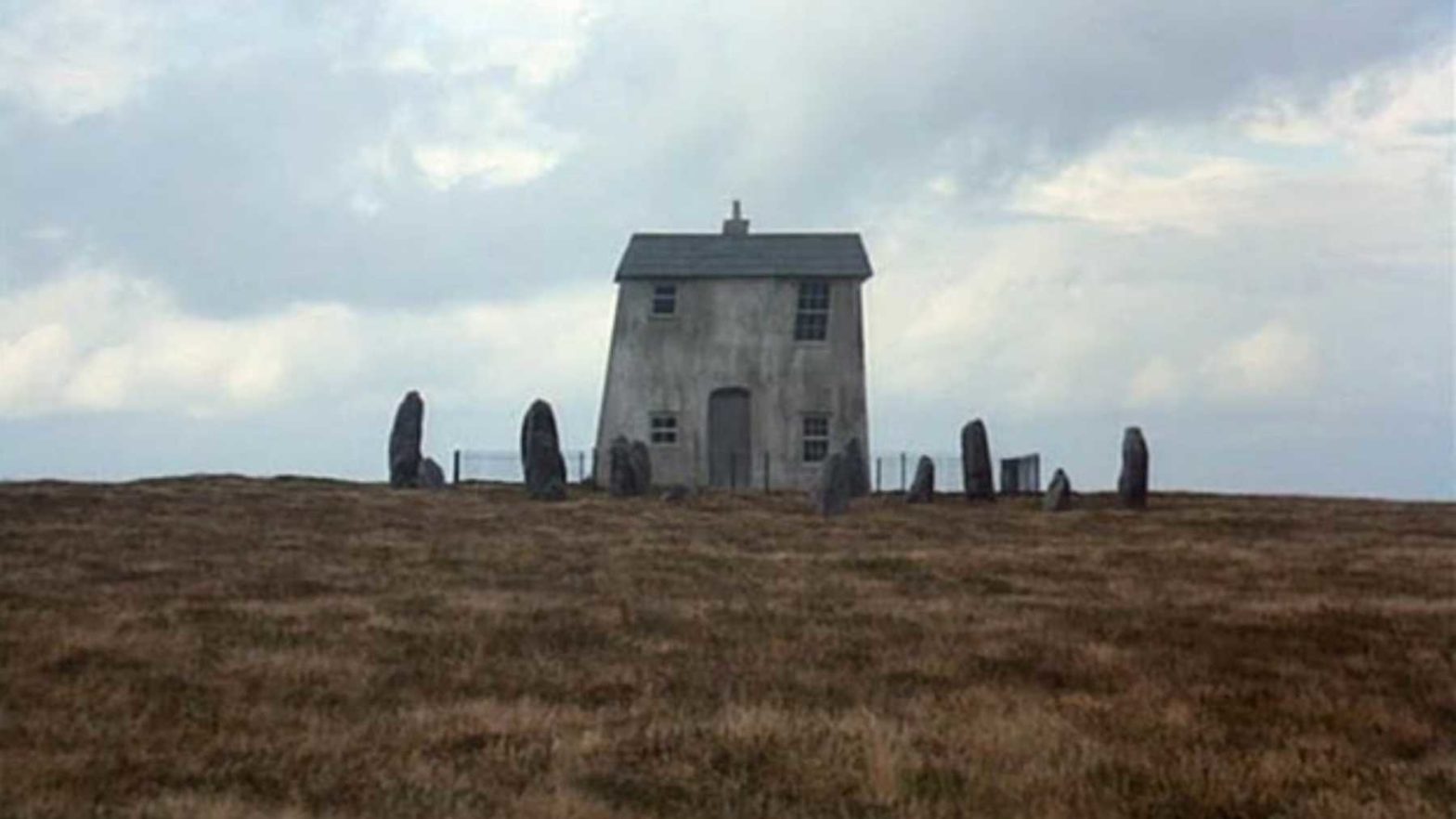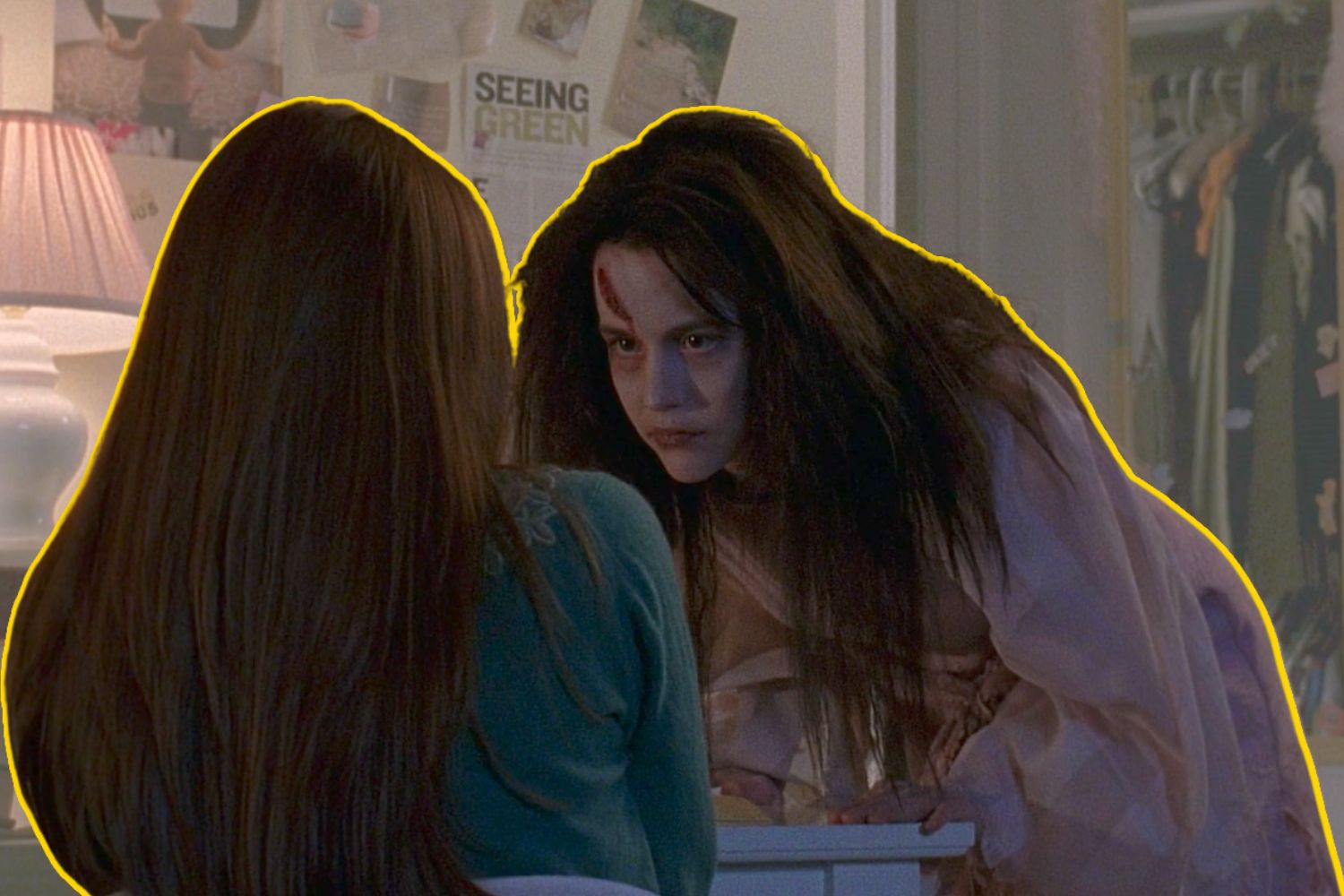Editorials
Childhood Trauma in Bernard Rose’s ‘Paperhouse’
August 3rd, 2020 | By Kim Morrison

In the world of horror films, children are often the characters who interact with monsters or villains before anyone else, but find that no one believes them until it’s much too late. They are far more likely to believe in “the unbelievable” than adults. Children don’t typically turn to logic or rationale, but simply recognize that they are in a situation where they should rightfully be terrified. The reason children are often dismissed in horror, and in general, is because they live in a world driven by imagination. A world where monsters are real, your parents are the center of everything, and friendships are formed quickly and solidly.
Paperhouse (1988), from director Bernard Rose, is based on the book Marianne Dreams by Catherine Storr. The film follows Anna (Charlotte Burke), a young girl who likes to draw and has a massive imagination. Rather than using Anna’s imagination against her, Paperhouse allows Anna to retreat into her world as an escape from the troubles of her real life. While those around her, such as her parents, her doctor, and her teachers are skeptical of the things Anna is telling them, none of that really matters as most of the film’s action takes place within Anna’s fantasy world.
The House on a Cliff
Anna’s life is changed forever when she draws a creepy-looking house while doodling during class one day. She seems to need a distraction from the problems going on in her life, such as her teachers treating her unfairly, her friends growing up without her, and her strained relationship with her mother (Glenne Headly).
After drawing the house, Anna passes out a couple of times, and in both instances finds herself in her imaginary world with her hand-drawn house firmly at the center. Anna is awake almost as soon as she arrives, but it’s the first flicker we get of the new coping mechanism that Anna has developed to deal with the issues in her life.
Worried for her daughter, Anna’s mother summons Dr. Nichols (Gemma Jones) to the house for an evaluation. Dr. Nichols asks Anna to rest, eventually diagnosing her with glandular fever. Dr. Nichols mentions another patient of hers in passing, a young boy who has been in bed for over a year, which is nothing compared to what she is asking of Anna.
Forced to stay in bed and rest for the foreseeable future, Anna returns to her artistic release and draws the boy from Dr. Nichols’ story in the window. Giving him an overly-sad face on the first attempt, Anna tries to correct her mistake, only to find she is unable to rub out her drawing.
A Childhood Friend
The next time she enters her dream world, Marc (Elliott Spiers) is waiting for her at the fantasy home’s top window. While she’s excited to have a playmate in this world with her, she soon finds out that Marc is unable to walk. Anna believes this is her fault for not giving him legs in the drawing. Marc isn’t sure how he ended up in Anna’s house but doesn’t believe her story about the two different worlds. He thinks the paper house is where he belongs.
Anna decides to kit the inside of the house out with fun things and lots of food for Marc and her to enjoy. She even tries redrawing Marc with functioning legs, but when she arrives, finds a pair of mannequin legs standing on their own, which soon shatter into pieces. In addition to Anna trying to erase parts of her drawing, this shows how easily children think they can fix mistakes.
Her thought process is logical, and her intent is kind, but when she arrives in the dream world, she sees that things are not always that simple. There are consequences to your actions that cannot easily be rubbed out when you realize you have made a mistake. Similarly, not everything is fixable, no matter how much you wish it to be.
Marc seems to have accepted this, but relies too heavily on the dream world to flee his problems. While Anna knows the difference between the two worlds and can switch between them quite easily, Marc appears to have forgotten about his old life to block out the fact that he is dying. There is nothing for him in the real world apart from pain, being stuck in his hospital bed, and a bike that he can only stare at but never ride. He has disassociated himself from his real life so much that he tells a personal story as though he were someone else.
Anna uses her drawings to try and expel some of the things which are taking up unwelcome space in her brain, but the fact that she is then able to enter her dream world and face her drawings gives Anna the ability to work through her issues face-to-face. She takes her trauma, and puts it into a form she can understand, then learns how to fight her literal monsters head-on. The process starts when she is awake, but finishes – while she’s asleep – within the walls of her paper house.
The Sins of the Father
The main issue Anna tackles in her dream world is her relationship with her father (Ben Cross). He is away a lot for work and there are also hints of an alcohol problem in his past which still affects Anna greatly. Anna decides to draw her father beside her paper house, but when she draws him looking drunk and “like a madman,” she gets so upset with herself that she crosses out his face. When her dad appears in the dream world, he’s been blinded by Anna’s scribbling, and wields a hammer, screaming for her to let him into the house.
This is the scariest segment of the entire film, as the black silhouette of Anna’s father makes his way across the grass. As children, we expect our parents to be the people we can rely on to protect us from anything, but Anna finds herself fighting her father transformed into a murderous creature. Because he has let her down so frequently in the real world, she has forgotten what it’s like to have a loving parent at home with her.
With her father, she can only focus on the bad parts of their relationship. She feels abandoned and failed by his drinking problem; the one monster her father cannot protect her from is the bad side of himself, and it’s this side that turns up at her imaginary doorstep.
While Anna and Marc try to escape on Marc’s bike, her father smashes it with his hammer. Getting themselves out of this situation by speeding away on a bike is complete kid logic and the perfect solution in a dream, but her dad smashing it to pieces shows that there is no running away from this.
Anna cannot continue to hide from her problems but instead needs to tackle them head-on. She’s been unable to do this with her mother and father in the real world, but she has to defeat her dad’s monstrous version to get on with her life.
Marc instructs Anna to rip her father out of the drawing, as it’s the only way to get rid of him entirely. After removing him, she burns the section of the paper with him on it, destroying the evil version of her father and causing the paper house to burst into flames as well. In order to progress with her father, Anna needs to let go of these feelings of negativity that she has built towards him, or they’re going to fester into something very ugly. This version of her dream world has served its purpose, and so the paper house is destroyed.
When Anna wakes up in the hospital to find her father has returned, she realizes she will need to address her issues with him in the real world. And while it’s not going to be as quick a fix as tearing him out of the picture, it still needs to be done to mend their relationship. They both seem to take steps towards growing closer as a family when her dad announces he’s got a job closer to home, and Anna apologies to him for being grumpy.
But their relationship is still strained because things like this take time to work out. There is no magic pencil or eraser in the real world to adjust your problems. You have to take the long road to fix them, but it’s worth it in the end.
Rebuilding What Was Lost
Anna returns home to her dream world one last time to see Marc. Now that the paper house is gone, she has drawn them a beautiful lighthouse by the sea to live in instead. Anna’s safe place has always been beside the sea, and she drew the lighthouse in her original drawing as a literal beacon of hope on the barren landscape surrounding the creepy house.
This time around, her dream world is much more realistic, beautiful, and it feels safe. When we think of a child’s imaginary world, we think of colorful landscapes and over-the-top features. Anna’s paper world was dull, grey, disjointed, and eerie because she channeled all her negative emotions into her drawing. The fantasy she created absorbed all that negativity and reflected it back onto her in a borderline nightmarish fashion. Now that she has destroyed that purgatory and is on the road to working past some of her problems, her dream world feels much more warm and inviting.
In the end, Anna doesn’t need her dream world anymore. She needs to stay in the real world with her family and heal the wounds they’ve all suffered for different reasons. She felt very distant from both her parents prior to the film’s events, but the whole situation brings them all closer together.
Conclusion
Paperhouse is the perfect fantasy horror story for a younger horror audience because it allows them to see that their worries, fears, and emotions are valid. It shows the importance of working through these problems in a tailormade, personal way so you can make positive changes in your life, and hopefully move forward. It also stresses the importance of believing in yourself and what you are feeling and experiencing, even if those around you aren’t providing the support you need. Where horror typically uses a child’s imagination as a disadvantage and something that makes them an unreliable witness to adults, Paperhouse shows that by working through scenarios in the imaginary world, it is possible to overcome those same issues in our inescapable realities.
Visit our Editorials page for more articles like this. Ready to support more original horror criticism? Join the Certified Forgotten Patreon community today.


